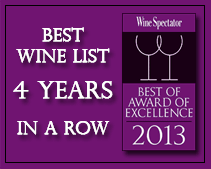Learning the basics to wine preparation is essential to the pursuit of wine appreciation as a worthy hobby. Here is an article about wine accessories that are available in wine shops in Manila Philippines.
June 16, 2011
Philippines Wine Shop Clark Wine Center is pleased to share with you articles, news and information about wine, wine events, wine tasting and other topics related to wine and the appreciation of wine.
Wine glasses have been used since ancient times.
Pliny (23–79 A.D.) wrote about gold and silver drinking vessels being abandoned in favor of glass, and they were frequently priced as high as the precious metal versions. Bonifacio Veronese’s sixteenth-century ‘Last Supper’ includes modern style wine glasses with a stem and foot.The oldest surviving European wine glasses with a stem and foot are fifteenth-century enameled goblets (a goblet is a glass holding more than four ounces of liquid).Near the end of the sixteenth-century in Germany sophisticated engraved decoration was applied to covered wine glasses.
The earliest surviving English wine glasses are diamond-engraved glasses that were produced near the end of the sixteenth-century by Verzelini. Plain straight stems gained popularity around 1740, with air twist stems being introduced about the same time. Ten years later a twist incised on the exterior of the stem became popular.Quality crystal wine glasses were being produced in France near the end of the eighteenth-century.Cordial glasses in the eighteenth-century had bowls of the same shapes that were typical for wine glasses, but they were much smaller, holding about one ounce.Toast masters glasses were made with a thicker bottom and walls so that they would hold less. A toast master had to drain every glass and still be able to remain standing till all toasts were completed.Wine glasses during the nineteenth-century were often produced in sets — with a dozen each of port and sherry, burgundy and claret, champagne glasses and liqueur glasses.More recently, in the 1950s, Riedel Crystal and other stemware manufacturers have refined wine glass design to the point of having a unique size and shape for almost every wine variation.Wine glasses are made for drinking wine, of course, but people are creative and have found other uses ranging from combining several wine glasses to construct a glass harp to using stemware in a similar manner to provide sound education. Champagne is best served in a tall slender tulip glass. Visual enjoyment of the bubbles that differentiate a sparkling wine from a still wine is enhanced by the height. The once popular shorter version of the Champagne glass — whose design was reputed to be based on an particular aspect of Marie Antoinette’s anatomy — is too likely to spill and doesn’t present the rising bubbles to best advantage or prolong the chill like a tall wine glass will.If your budget, available cabinet space or desire for simplicity limit your wine glass and stemware collection to a single size, a number of producers have made all purpose designs. Most all-purpose wine glass designs are attractive and relatively inexpensive. You may want to pick a design similar to what the California Wine Institute developed as an all-purpose wine glass. It is five and one half inches tall with a one and three quarter inch stem. Its clear, tulip-shaped bowl has a capacity of eight ounces.
There is also an International Standards Organization (ISO) wine glass, but — like many of the wine glasses you might collect as souvenirs when tasting at wineries — it may be a better size for tasting wine — a little small for drinking wine
Source: http://www.inetours.com/PagesWT/Wine_glasses.html
Clark Wine Center was built in 2003 by Hong Kong-based Yats International Leisure Philippines to become the largest wine shop in Philippines supplying Asia’s wine lovers with fine vintage wines at attractive prices. Today, this wine shop in Clark Philippines offers over 2000 selections of fine wines from all major wine regions in the world. As a leading wine supplier in Philippines, Pampanga’s Clark Wine Center offers an incomparable breadth of vintages, wines from back vintages spanning over 50 years. Clark Wine Center is located in Pampanga Clark Freeport Zone adjacent to Angeles City, just 25 minutes from Subic and 45 minutes from Manila.
Wines from Burgundy, Bordeaux, Rhone, Loire, Spain, Portugal, Germany, Austria, Alsace, USA, Australia, New Zealand, Italy, South Africa, Chile and Argentina etc. are well represented in this Clark Wine Shop.
For more information, email Wine@Yats-International.com or visit http://www.ClarkWineCenter.com
Getting to this wine shop in Pampanga Angeles City Clark Freeport Zone Philippines from Manila
Getting to the Clark Wine Center wine shop from Manila is quite simple: after entering Clark Freeport from Dau and Angeles City, proceed straight along the main highway M A Roxas. Clark Wine Center is the stand-along white building on the right, at the corner A Bonifacio Ave. From the Clark International Airport DMIA, ask the taxi to drive towards the entrance of Clark going to Angeles City. From Mimosa, just proceed towards the exit of Clark and this wine shop is on the opposite side of the main road M A Roxas.
You can skip to the end and leave a response. Pinging is currently not allowed.





